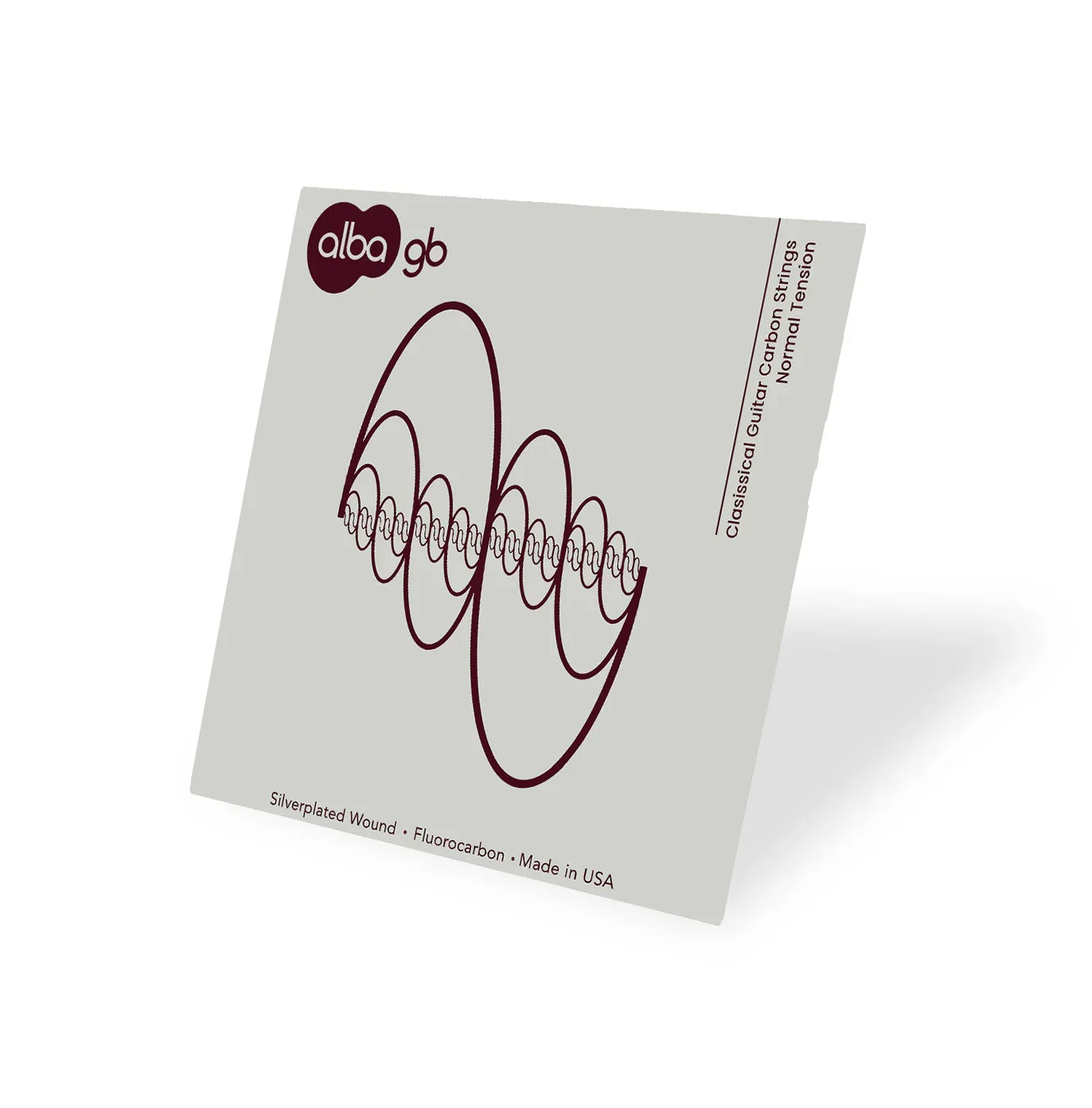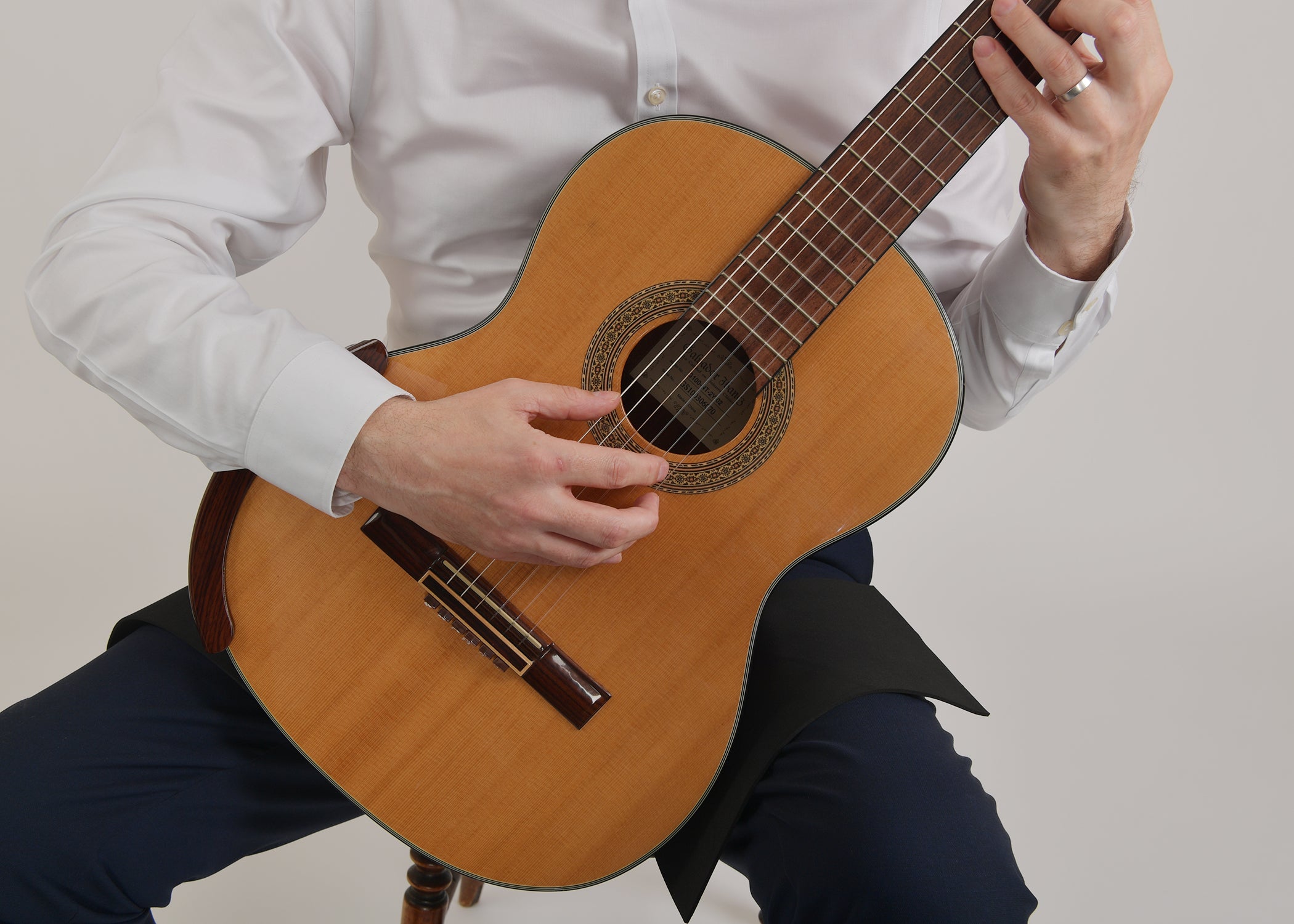Spruce vs Cedar Classical Guitars: Understanding the Right Top for Your Repertoire
Every classical guitarist eventually encounters the question of soundboard material—spruce or cedar. These are the two most common tone woods used in luthier-made classical guitars. Each offers distinct acoustic qualities and responds differently to touch, time, and environment. The right choice depends on the repertoire, projection needs, and tonal preferences—not on opinion, but on application.
What Makes Spruce and Cedar Dominant in Classical Guitar Tops?
Spruce and cedar are not alternatives by accident. They are the two tonewoods that consistently deliver the responsiveness, resonance, and clarity required for professional classical guitar performance.
The spruce top classical guitar has long been associated with clarity and projection. German spruce and Engelmann spruce are particularly prized for their density and stiffness, resulting in a guitar that responds well to dynamic variation and offers superior separation between voices.
The cedar top classical guitar, most commonly western red cedar, is softer and darker in tone. It offers immediate tonal bloom and strong sustain. The response is more rounded and forgiving, which appeals to many guitarists performing Romantic, Brazilian, and contemporary repertoire.
How Top Woods Affect Repertoire and Technique
The tonal differences between spruce and cedar tops are practical. Professional guitarists often rotate between both types of guitars depending on the music being performed.
Spruce tops provide brighter overtones and work well for contrapuntal works, such as the Bach lute suites or Fugue in G minor. The best luthier near me may even recommend spruce to players who emphasize separation and voice clarity.
Cedar, by contrast, works better for expressive phrasing and lyrical warmth. It suits the tone requirements of Tárrega, Barrios, or Agustín Pío Castellón.
Flamenco guitarists using nylon strings or carbon strings for added projection may also choose spruce for its bite or cedar for its mellow compás, depending on palos performed.
Long-Term Development of Spruce and Cedar Tops
Spruce top guitars are often described as having more headroom. Their tonal development matures gradually with regular playing. Over time, spruce opens up, revealing complex harmonic layering. This makes spruce ideal for concert classical guitars that see heavy use in performance settings.
Cedar tops, by contrast, offer their full voice almost immediately. They tend not to change dramatically over time, but maintain their tonal character with consistency. For this reason, cedar guitars are often recommended to intermediate players or those who prefer a more predictable tonal response.
While both tonewoods are used in concert-grade instruments, they behave differently under the hand. Spruce offers a stiffer plate, which requires greater input from the right hand. This translates to increased control over phrasing, but it also means the player must engage more actively to produce tone. Cedar, by contrast, offers a more immediate response with less right-hand effort. This makes it suitable for players seeking tonal stability with minimal adjustment across dynamic levels.
Durability and Repairs
From a luthier’s perspective, cedar is softer and slightly more vulnerable to dings, especially if not stored in a humidity-controlled case. Spruce is more resistant to marking, though both woods require careful handling. Maintenance matters. For those searching "professional luthier near me" or "luthier London", standard advice remains:
- Always store in a hard case
- Keep humidity between 45–55%
- Avoid temperature extremes
- Clean soundboards only with approved guitar polish and microfibre cloth
From a structural perspective, spruce is harder and typically lighter than cedar. Its stiffness allows for thinner bracing and contributes to a stronger top-end projection. Luthiers often use lattice or fan bracing designs with spruce to control overtones and balance tonal output. Cedar’s softness and higher damping characteristics favour a more traditional fan bracing layout, helping preserve the wood’s inherent warmth and rounded tonal bloom. These bracing approaches are not fixed rules but reflect long-standing trends among professional luthiers in the UK, EU, and US.
Luthier-Made Builds and Top Woods
Most custom builds by luthier near me services in the UK or Europe offer both options. Makers and luthiers of classical guitars provide detailed consultations around top wood pairing with body materials and bracing systems.
Some premium builders of traditional classical guitars or double-top classical guitars may even laminate spruce and cedar together in experimental builds for blended tonal benefits. That said, most professional instruments still adhere to one or the other for tonal purity.
Tone woods are also selected based on how the guitar will age. Spruce guitars are known to improve significantly over time. The soundboard becomes more resonant and complex as the grain settles. Cedar guitars stabilise more quickly but do not change as dramatically after years of playing. This makes cedar attractive for players who need a predictable, reliable instrument in the short term. Some performers working with luthier supplies UK-wide request pre-aged or torrefied spruce tops to access mature tone more quickly.
Repertoire-Driven Selection: More Than Just Tone
It's not about preference—it’s about purpose.
- For solo recitalists, spruce top guitars offer articulation and headroom.
- For duo or ensemble players, cedar top guitars blend more warmly.
- For recording artists, cedar may be preferred for its consistent response under microphones.
- For those performing 19th-century repertoire, spruce recreates historical voicing more closely.
- For Latin American or Brazilian pieces, cedar delivers a more rounded texture.
Most serious players will eventually own both. As such, "spruce vs cedar guitar" isn’t a debate. It’s a rotation.
The choice of spruce or cedar also depends on the intended use of the instrument. A touring guitarist performing with ensembles may prefer spruce for its cutting power and projection. A solo guitarist focusing on expressive pieces or fingerstyle arrangements may lean towards cedar for its ease of response. Many professional players own both types and rotate them depending on programme requirements. There is no objective better option. The repertoire and context inform the selection
Guitarists working with a luthier near me, or searching for a luthier in London, often start by testing both top types. Visiting a local luthier workshop or exploring available options at specialist guitar shops in the UK or EU will help match the tonal profile of the instrument with the guitarist’s goals. Some players order a cedar top for use in intimate venues and a spruce top for stage work. Others collaborate with a professional luthier near me to build a hybrid model using elements from both.
Spruce and cedar are also used in signature models by established makers. The Córdoba Luthier Series includes models with both top types, allowing players to experience the contrast in similar body constructions. Other luthier workshop guitars also offer variations based on the top wood, giving buyers access to concert-level instruments without commissioning a custom build. The spruce top classical guitar, for instance, delivers outstanding articulation, while the cedar variant excels in warmth and tone shading.
Strings and Tonewood Synergy
Top wood isn’t everything. Strings play a critical role.
- On spruce guitars, carbon strings for classical guitar sharpen articulation and clarity.
- On cedar guitars, nylon strings for classical guitar bring out warmth and sustain.
- For flamenco guitarists, tension and projection are critical. Pairing carbon trebles with high-tension basses on a cedar top can yield a modern flamenco sound.
If you’re buying strings from Alba GB or elsewhere, make sure your string selection complements—not contradicts—your top wood.
High-level players often pair spruce or cedar with appropriate string types. Spruce top guitars respond well to carbon strings, which enhance brightness and projection. Cedar guitars usually pair better with nylon strings, which preserve the tone’s warmth. Matching strings to top wood is standard practice for serious performers and can affect how the guitar performs in recordings, ensemble settings, or solo performance.
Certain recording engineers also have preferences based on top woods. Spruce guitars tend to cut better through complex mixes due to their upper-end presence, while cedar guitars record well in close-mic setups where richness and subtle articulation matter. This practical knowledge has influenced the types of guitars players choose for different studio work.
When to Consult a Luthier Near You
Your top wood’s performance also depends on proper setup and care. If you notice:
- Loss of responsiveness
- Buzzing in higher positions
- Changes in volume or sustain
…it’s time to book with a professional luthier near me.
Whether you're in the UK, EU, or the US, you'll find experienced luthiers near me that can service humidity cracks, brace damage, or optimize string action for your top’s responsiveness.
Spruce and cedar guitars can also respond differently to changes in humidity and environment. Cedar tops, being softer, are sometimes more vulnerable to damage or surface dents if not stored properly. Spruce is less prone to marking, but both woods benefit from proper protection. Alba GB carbon guitar cases are used by many professionals to maintain stable humidity levels during travel or long-term storage, especially when transporting valuable guitars to different climates.
In terms of long-term maintenance, spruce tops allow for more visible reading of wear patterns, which some players prefer when assessing the guitar’s response to technique changes. Cedar, with its darker tone and matte finish, shows playing wear less clearly. Luthiers providing maintenance services often recommend specific finishes and polishing compounds based on the type of wood, especially for French polish finishes.
Luthier Supplies and Guitar Upgrades
For owners maintaining their guitars at home, using the correct luthier supplies UK is critical. Products like:
- Bridge clamps
- Hide glue
- French polish kits
- Humidifiers
- Polishing cloths
...can support day-to-day upkeep of both spruce and cedar guitars. You’ll also find accessories tailored for concert classical guitar players, including armrests, sound ports, and saddle upgrades.
Different tops are used for different music. Spruce isn’t “better.” Cedar isn’t “warmer.” Each brings something unique to your performance. Let your repertoire guide your soundboard—not the other way around.
If you’re looking for expert tone wood advice or a luthier-made classical guitar tailored to your needs, Alba GB works with some of the finest independent builders across Europe. Reach out to discover our full range of hand-selected spruce and cedar guitars today.





Leave a comment
This site is protected by hCaptcha and the hCaptcha Privacy Policy and Terms of Service apply.